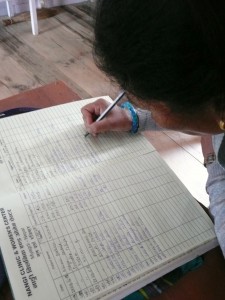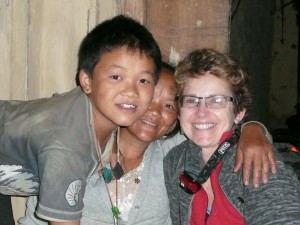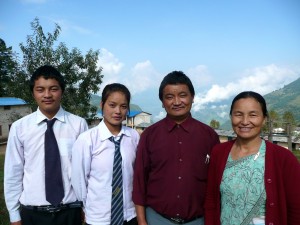Here is a little background about healthcare in Nepal so you understand why and how Lila and Rupa got started. The American Nepal Medical Foundation lists over 130 hospitals in Nepal. Most of these are private, money making ventures and located in large urban areas. In reality there are few government hospitals outside the large cities. The smaller towns, such as Baglung, do have hospitals but by world standards these are merely clinics staffed by a nurse, laboratory and x-ray technicians and/or Community Health Worker (CHW). The government paid doctors are often absent because they are managing their private clinics and hospitals in the cities. These facilities are poorly stocked and managed, often without the ability to perform life saving surgical procedures such as cesarean sections.
Access to the facilities is difficult because the majority of people have to walk hours and even days to get there. The care in government hospitals isn’t free, so even if you could get there most people don’t go because they have no money to pay for the care. There are a few exceptions to this dismal reality such as Nyaya Health, http://www.nyayahealth.org, a non-government facility that provides free health care in western Nepal. There are rural government “health posts” located in small villages. These are staffed by government trained CHW and provide basic services such as treatment for pneumonia, child birthing and some free government programs such as vaccines, Vitamin A supplements and family planning.
Nangi was a three-hour walk to the government health post and a day’s walk to the nearest hospital. Immediate care in Nangi was administered by family members, such as grandmothers assisting during childbirth, or by Shamans, the spiritual healers. The village decided they needed their own trained HCWs to care for people in a more timely fashion. Lila and Rupa were sent at different times about 15 years ago for training. Their training was funded partly by the village, themselves and non-governmental organization (NGO) funds.

Lila records a patient’s name, demographics, diagnosis and treatment into the clinic ledger. Individual records are recorded in small notebooks and kept by the patients. Lila and Rupa have a remarkable ability to recall patient visits and find them in the ledger…they consider it their form of “electronic” records.
Technically neither Lila nor Rupa are nurses. They did not graduate from an accredited nursing program. They graduated from Community Health Worker (CHW) programs. Think of the training as the advanced equivalent of a paramedic in the USA. They were trained to diagnose and treat common medical conditions and minor trauma, administer medications and IV fluids, suture simple wounds, splint broken bones and deliver babies. They are excellent at what they do. They are also phenomenal because they do it in a resource poor environment hours from any back-up care. Their excellence lies not only in their abilities as practitioners but also in their ability to recognize when a higher level of care is needed…they know their limits. Now, thanks to Mahabir’s wireless systems, they can call using the computer or cell phones for a quick consult with either a doctor in Pokhara or Kathmandu. There is also a jeep that can get someone down to the road faster then by foot, but only during the dry season.
Lila is married with one son, Neuton, who is 13 years old. She staffs the clinic in either the morning or afternoon, alternating with Rupa. She is also the second grade teacher. Her husband works in Qatar and comes home for 6 weeks every two years. During this time she is the sole caretaker for her son, home and farm fields. Yes…she is also a farmer…go back to the November 19th post and look at the terraced fields again. Imagine finishing your work at the school, going to the clinic for a few hours and then picking up your hoe and cultivating several hundred feet of dirt, herding animals, building a fire, cooking dhal bhat, helping your son with homework and calling it a day.
Rupa is also married with one son. She lives with her husband Boj, their son Pablar and his wife, Sangita. She staffs the clinic once daily in either the morning or afternoon. Because the clinic is not busy enough to support a full-time paid CHW she teaches the kindergarten class. I think her life is a little easier because she shares the responsibilities with Boj, who is a teacher. But she also leaves school or the clinic to cultivate fields, chase chickens, cut grass, gather firewood, build a fire and cook…after walking to reach home. Think about that the next time you pop leftovers into the microwave after a tough day.
The village school supports them by paying their salaries which is the reason they multi-task between clinic and teaching. They are respected for their skills and dedication….and every time I work or think about them I am awed by their strength and accomplishments. Join me next week as I delve into the perpetual controversy between Mahabir and me over the clinic’s future.



This is fascinating reading, to put more context into lila and rupa’s life and what they do … Keep writing ..
Yep, I’m reading as well, and interested in everything you write! Gives a wider view and more insights to Nangi and Nepal.